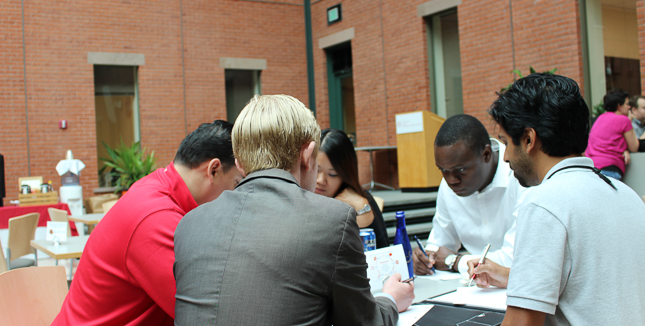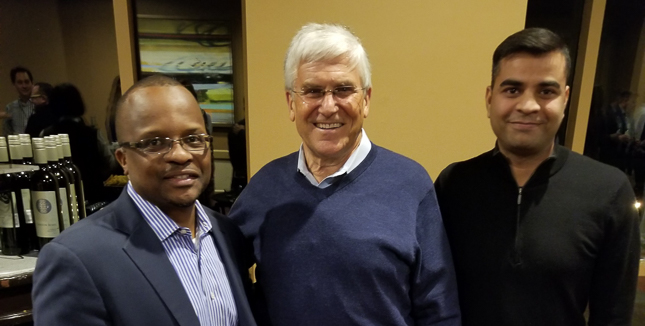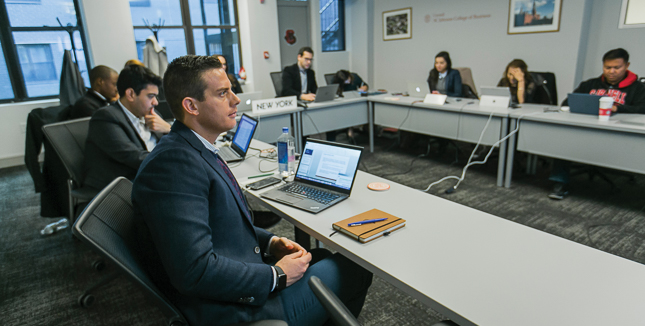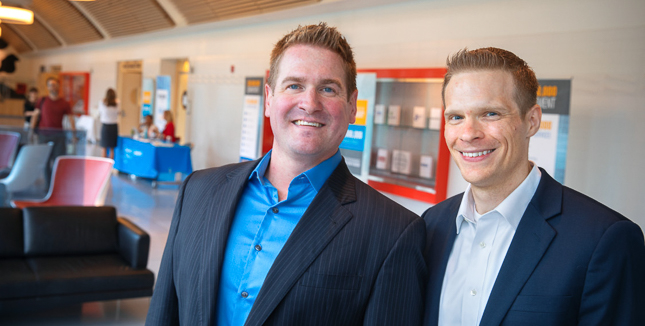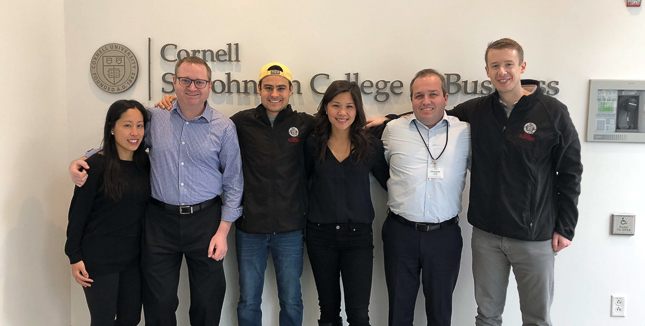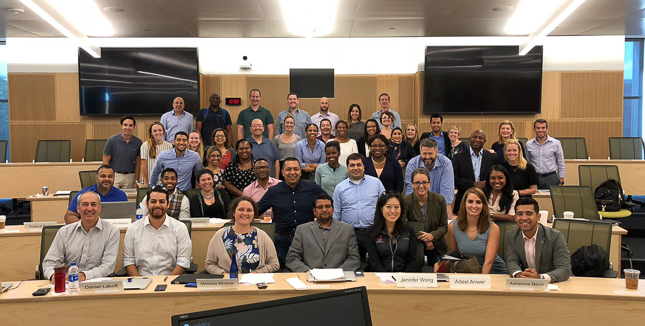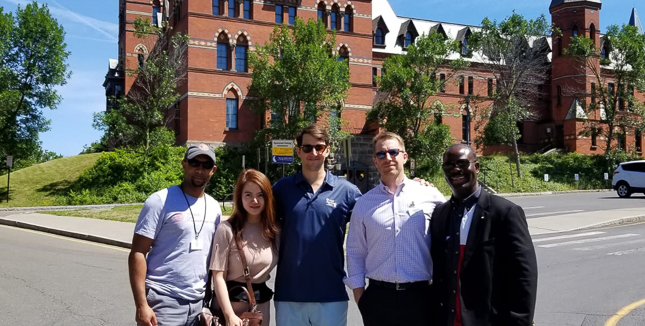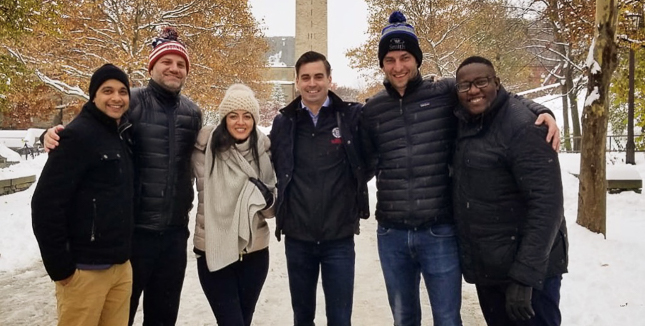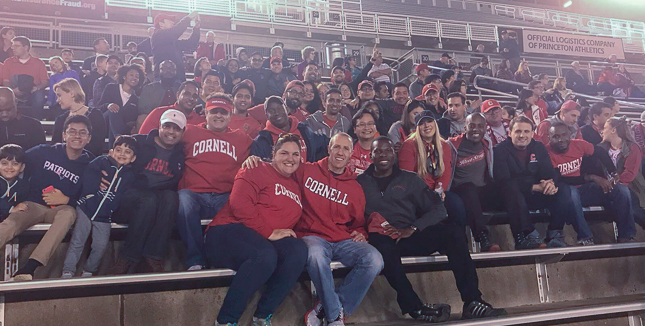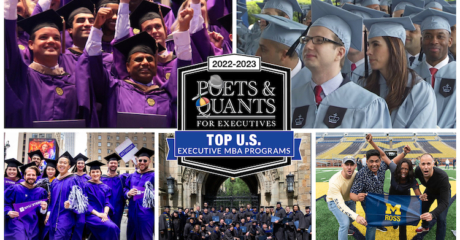Cornell’s Americas Executive MBA (EMBA) program is a rigorous program designed for experienced executives who are looking to advance their careers while continuing to work full-time. The program is offered in partnership with the Samuel Curtis Johnson Graduate School of Management at Cornell University and is delivered through a combination of online and in-person instruction.
Cornell’s EMBA Americas pioneered the concept of distributed classrooms with remote instruction all the way back in 2005, with the clear advantage being as a working professional, there’s no need to relocate. With its partner Queens University in Canada, it opened remote fusion learning rooms known as “boardrooms” in 20 cities in the U.S., Canada, Mexico, Chile and Peru. Students can attend classes physically through sitting with their peers, or if they are a great distance from one of the boardrooms, they can participate remotely. There’s typically about 145 students in the program annually. Classes alternate every other Saturday and Sunday for EMBAs.
“Cornell is the only Ivy League program that uses distributed classrooms with remote instruction, allowing executives from different parts of the country—from the Bay Area to Boston and Detroit to Dallas—to study at an Ivy League university based in the Northeast. It is now the gold standard in distance education,” Manoj Thomas, senior director of Cornell Johnson’s EMBA programs, tells Poets&Quants.
The program is structured as a 17-month program incorporating four residencies throughout the degree between classes, beginning in June at the start of the program on the Cornell and Queen’s campuses. There’s an opportunity for EMBAs to embark on an international global business project immersion if they wish as well.
During these residencies, students have the opportunity to network with classmates and faculty, participate in workshops and simulations, and attend guest lectures and company visits.
Cornell Americas EMBAs complete 60 credits of required courses, electives, and two major projects – one being the New Venture or Consulting project that’s undertaken individually where EMBAs explore entrepreneurship through a new business idea or consulting for organization of their choice alongside an advisor, and the other being a team-based Global Business project where teams conduct a comprehensive analysis of a real international business issue and travel internationally to do on-the-ground work and research with their partner organization.
Overall, the Cornell Americas EMBA program is designed to provide experienced executives with a comprehensive understanding of global business practices and the skills necessary to succeed in today’s dynamic business environment. Graduates of the program are well-equipped to take on leadership roles within their organizations and to drive innovation and growth.
Aranthan “AJ” Jones II, Cornell Americas EMBA, tells Poets&Quants, “The biggest myth is that you will not have the time and support to complete the program. When I talked with many classmates, they delayed starting their MBA over the concern of the time commitment and not having faculty and/or school resources to successfully navigate the quantitative courses. As we settled into our program, it was clear that the school and the faculty were committed to ensuring each student had the support and flexibility to complete the program.”








